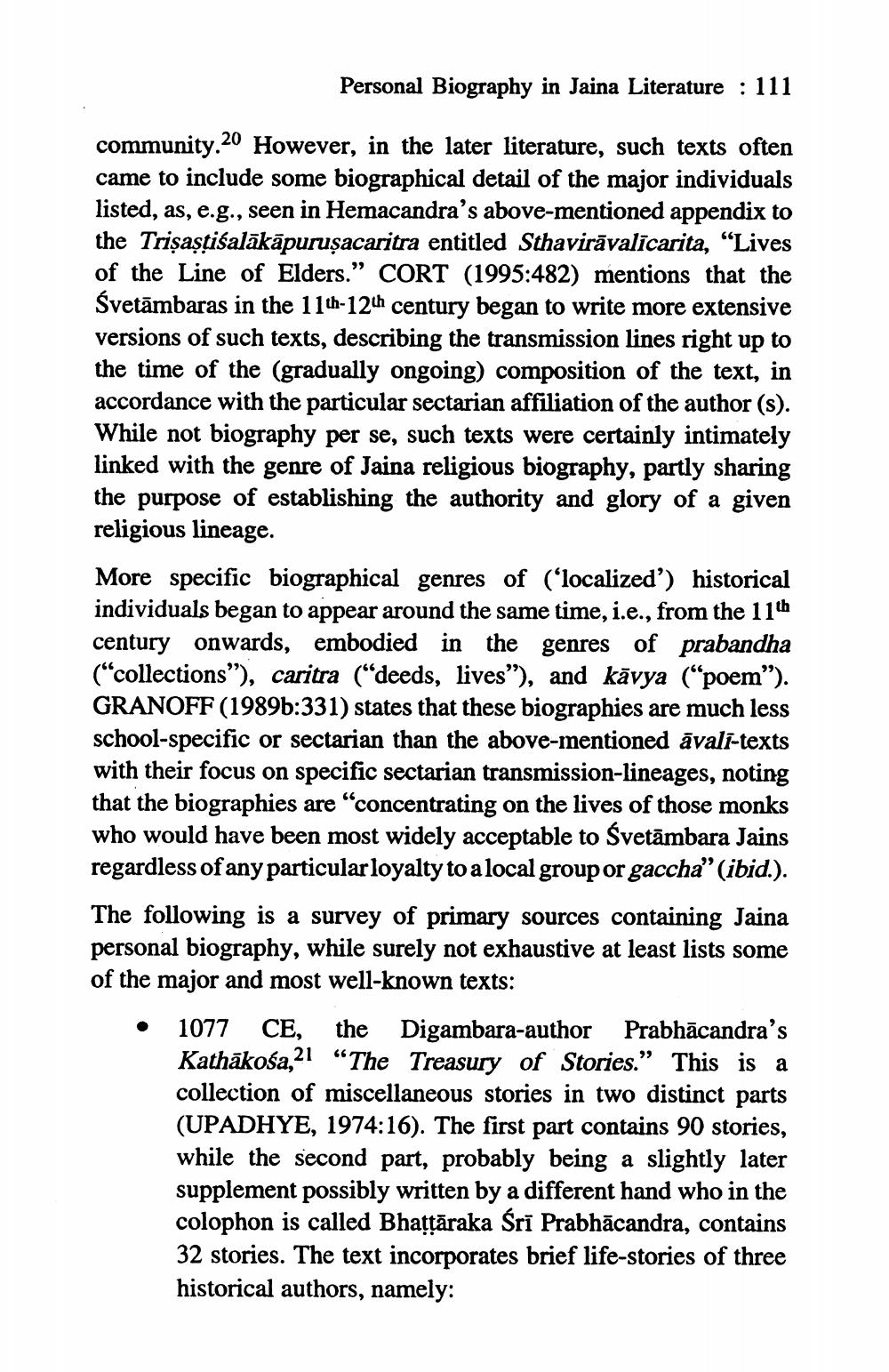________________
Personal Biography in Jaina Literature : 111
community.20 However, in the later literature, such texts often came to include some biographical detail of the major individuals listed, as, e.g., seen in Hemacandra's above-mentioned appendix to the Trişastiśalākāpuruşacaritra entitled Sthavirāvalīcarita, "Lives of the Line of Elders.” CORT (1995:482) mentions that the Svetāmbaras in the 11th-12th century began to write more extensive versions of such texts, describing the transmission lines right up to the time of the (gradually ongoing) composition of the text, in accordance with the particular sectarian affiliation of the author(s). While not biography per se, such texts were certainly intimately linked with the genre of Jaina religious biography, partly sharing the purpose of establishing the authority and glory of a given religious lineage. More specific biographical genres of (ʻlocalized') historical individuals began to appear around the same time, i.e., from the 11th century onwards, embodied in the genres of prabandha ("collections”), caritra (“deeds, lives”), and kavya (“poem"). GRANOFF (1989b:331) states that these biographies are much less school-specific or sectarian than the above-mentioned avali-texts with their focus on specific sectarian transmission-lineages, noting that the biographies are “concentrating on the lives of those monks who would have been most widely acceptable to Svetāmbara Jains regardless of any particular loyalty to a local group or gaccha" (ibid.). The following is a survey of primary sources containing Jaina personal biography, while surely not exhaustive at least lists some of the major and most well-known texts:
1077 CE, the Digambara-author Prabhācandra's Kathākośa,21 “The Treasury of Stories.” This is a collection of miscellaneous stories in two distinct parts (UPADHYE, 1974:16). The first part contains 90 stories, while the second part, probably being a slightly later supplement possibly written by a different hand who in the colophon is called Bhattāraka Śrī Prabhācandra, contains 32 stories. The text incorporates brief life-stories of three historical authors, namely:




